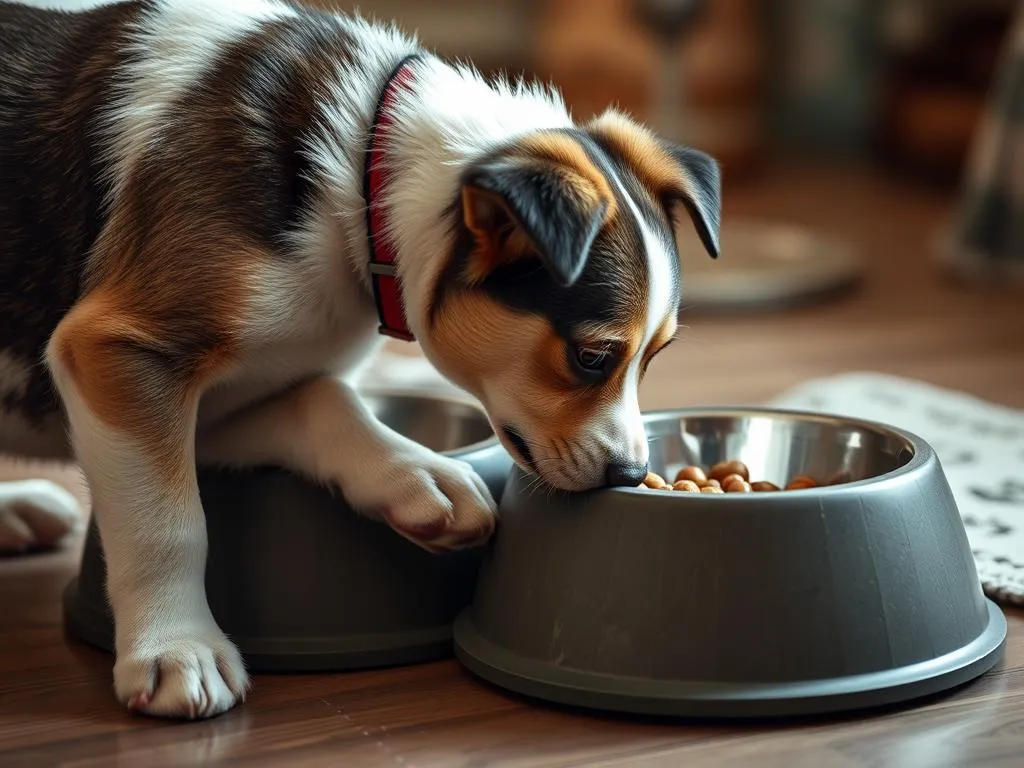
In the world of pet care, dog owners are constantly looking for ways to improve their furry friends’ health and well-being. One innovative solution that has gained significant traction in recent years is the use of slow feeder dog bowls. These specially designed bowls help slow down fast eaters, promoting better digestion and reducing the risk of health issues. As dog owners become more aware of the benefits of these bowls, their popularity continues to rise. In this article, we will explore what slow feeder dog bowls are, their benefits, types available, how to choose the right one, and tips for a smooth transition for your pup.
What are Slow Feeder Dog Bowls?
Definition
Slow feeder dog bowls are specially designed feeding dishes that feature obstacles or intricate patterns to make it challenging for dogs to access their food quickly. Unlike traditional bowls, these feeders encourage dogs to eat at a slower pace.
Purpose
The primary purpose of these bowls is to decelerate the eating process of dogs that tend to gulp their food. Fast eating can lead to several health issues, including digestive problems, weight gain, and even life-threatening conditions like bloat.
How They Work
Slow feeders typically come with various design features, such as raised sections, mazes, or spiral shapes, which require dogs to navigate around obstacles to reach their food. This design not only slows down their eating but also stimulates their minds, providing a more enriching meal experience.
Benefits of Using Slow Feeder Dog Bowls
Improved Digestion
One of the most significant benefits of using slow feeder dog bowls is improved digestion. When dogs eat too quickly, they tend to swallow air along with their food, leading to discomfort and digestive issues. Slowing down the eating pace helps the digestive system function more effectively, reducing the risk of upset stomachs and other gastrointestinal problems.
Weight Management
Obesity is a growing concern among pets, and fast eating is a contributing factor. By using slow feeders, dog owners can help regulate their pets’ food intake, promoting healthier eating habits. This is particularly beneficial for overweight dogs, as it encourages them to eat smaller portions over a more extended period, aiding in weight management.
Preventing Bloat
Bloat, or gastric dilatation-volvulus (GDV), is a serious condition that can occur when dogs eat rapidly. It causes the stomach to twist and fill with gas, which can be life-threatening if not addressed immediately. Slow feeder dog bowls play a crucial role in reducing the risk of bloat by promoting slower eating, allowing the stomach to process food gradually.
Mental Stimulation
In addition to physical health benefits, slow feeders provide mental stimulation for dogs. The challenge of navigating the obstacles in the bowl encourages problem-solving and engages their cognitive abilities. This mental engagement can reduce boredom and destructive behaviors often associated with lack of stimulation.
Behavioral Improvement
Dogs that eat too quickly may also exhibit behavioral issues, such as food aggression or anxiety during mealtime. Slow feeders can help mitigate these issues by allowing dogs to focus on their food in a calmer manner, promoting a more relaxed eating environment.
Types of Slow Feeder Dog Bowls
Material Types
Slow feeder dog bowls come in various materials, each with its pros and cons. Common materials include:
- Plastic: Lightweight and affordable, but may not be as durable as other options. Look for BPA-free varieties.
- Ceramic: Heavier and more stable, ceramic bowls are often visually appealing but can chip or break if dropped.
- Stainless Steel: Highly durable, easy to clean, and resistant to bacteria, stainless steel is an excellent choice for long-term use.
Design Variations
The design of slow feeders varies widely, with some popular types being:
- Maze: Features a series of raised sections that create a maze for food.
- Puzzle: Incorporates compartments and sliding elements that require dogs to figure out how to access their food.
- Spiral: Contains a spiral design that forces dogs to navigate around curves to reach their meal.
Sizes and Shapes
When selecting a slow feeder, it’s essential to consider your dog’s size and breed. Bowls come in various sizes and shapes to accommodate different eating habits. For example, a shallow bowl may work better for smaller breeds, while larger dogs may require deeper bowls to prevent food from spilling.
How to Choose the Right Slow Feeder Dog Bowl
Consider Your Dog’s Size and Breed
Choosing the right bowl starts with assessing your dog’s size and breed. Large breeds may need a bigger bowl to prevent them from feeling frustrated, while small breeds will benefit from a bowl that is appropriately sized for their mouths.
Eating Habits
Evaluate your dog’s eating habits. Is your dog a consistent fast eater, or do they only eat quickly occasionally? Understanding their behavior will help you select a bowl that meets their specific needs.
Durability and Safety
Safety is paramount when selecting a slow feeder. Ensure the materials are non-toxic and durable. Look for products that are free from harmful chemicals and are designed to withstand regular use.
Ease of Cleaning
Feeding bowls can become messy, so opt for slow feeder dog bowls that are easy to clean. Many bowls are dishwasher safe, which can save you time and effort in maintaining hygiene.
Budget Considerations
The cost of slow feeder dog bowls can vary significantly. While investing in a high-quality bowl is essential, there are options available across various price ranges. Consider the value and durability of the product before making a purchase.
How to Transition Your Dog to a Slow Feeder Bowl
Gradual Introduction
When introducing your dog to a slow feeder, it’s essential to do so gradually. Start by placing a small amount of food in the bowl and allow your dog to explore it. This will help them get accustomed to the new feeding style without feeling frustrated.
Monitoring Eating Habits
Keep an eye on your dog’s behavior during the transition. Some dogs may initially struggle with a slow feeder, so monitor their eating habits and adjust your approach as needed. If they seem frustrated or refuse to eat, consider reverting to their old bowl temporarily before trying again.
Encouragement Techniques
Positive reinforcement can go a long way in encouraging your dog to use a slow feeder. Use treats or praise when they successfully navigate the bowl to access their food. This will help create a positive association with the slow feeder.
Common Issues and Solutions
Dog Refusing to Eat from a Slow Feeder
If your dog refuses to eat from a slow feeder, it might be due to the new design being confusing or frustrating for them. To help, try:
- Returning to a regular bowl temporarily and then reintroducing the slow feeder.
- Offering smaller portions to make eating less overwhelming.
- Mixing dry food with wet food to make it more appealing.
Messy Eating
Some dogs can be messy eaters, especially with slow feeders. To manage messiness, consider using a mat underneath the bowl to catch any spills, or choose a bowl with a design that minimizes food scattering.
Health Concerns
If you notice any unusual behavior during feeding, such as choking or excessive gagging, consult your veterinarian. It’s essential to ensure that your dog is comfortable with their new feeding method and that there are no underlying health concerns.
Alternative Feeding Solutions
Interactive Feeders
If your dog struggles with slow feeders, consider other interactive feeding solutions. These can include toys that dispense food as your dog plays, keeping them engaged while they enjoy their meal.
Puzzle Toys
Puzzle toys can also serve as an alternative feeding method, providing both mental stimulation and a slower eating experience. These toys require dogs to work for their food, promoting a more engaging dining experience.
DIY Slow Feeder Ideas
For those who enjoy a hands-on approach, there are several DIY methods to create a slow feeder at home. For example, you can use a muffin tin filled with tennis balls to slow down eating, or place clean rocks in a standard bowl to create obstacles. Just make sure whatever method you choose is safe for your dog.
Conclusion
Slow feeder dog bowls are a fantastic solution for dog owners looking to improve their pets’ eating habits and overall health. By slowing down the eating process, these bowls can lead to better digestion, weight management, and a reduction in the risk of bloat. With various types and materials available, it’s essential to consider your dog’s specific needs when selecting a bowl. Transitioning to a slow feeder may take some time, but with patience and positive reinforcement, your dog can enjoy a healthier, more enriching mealtime experience. By making this simple change, you can contribute to your dog’s well-being and happiness for years to come.









